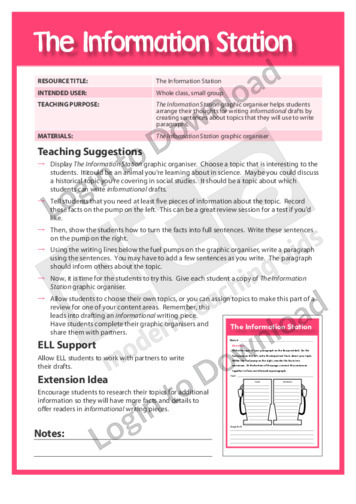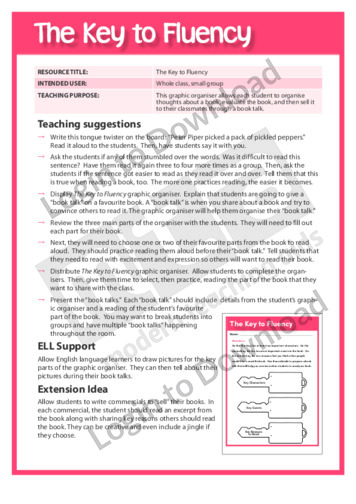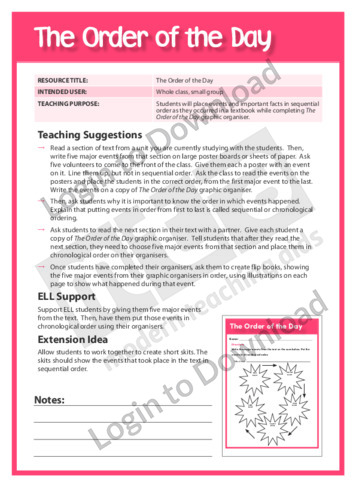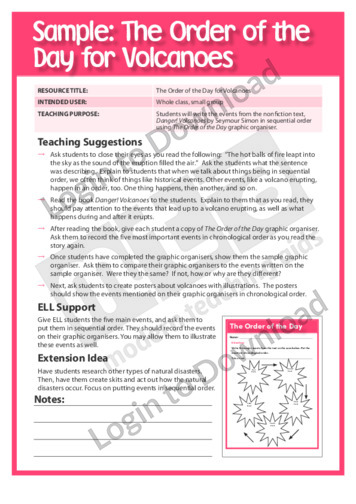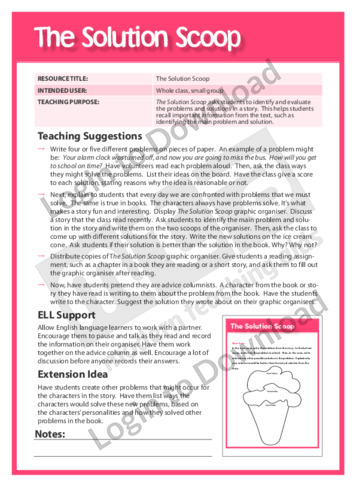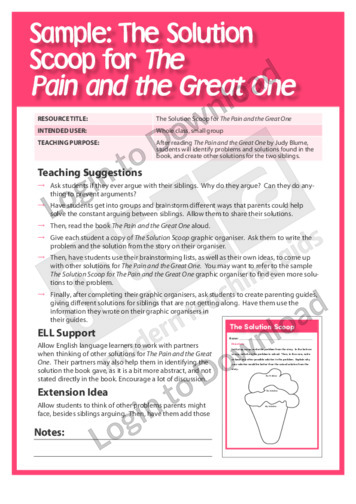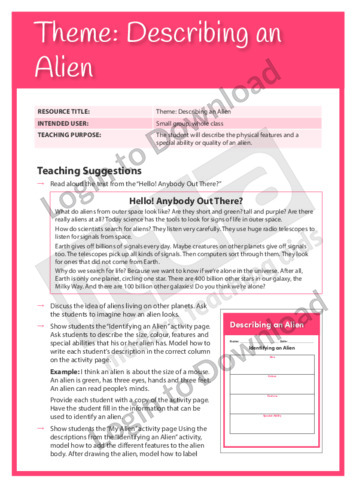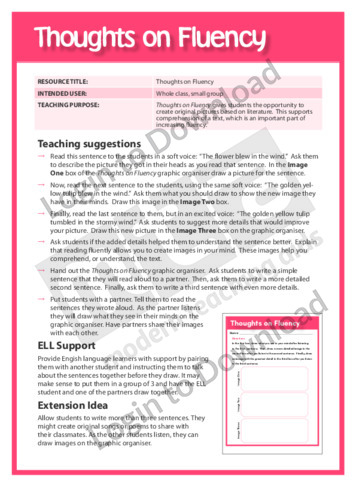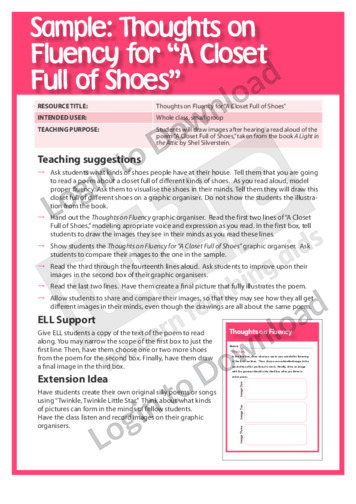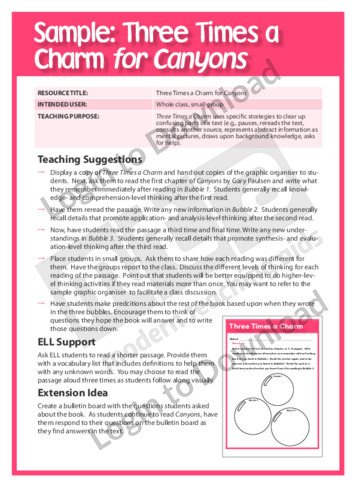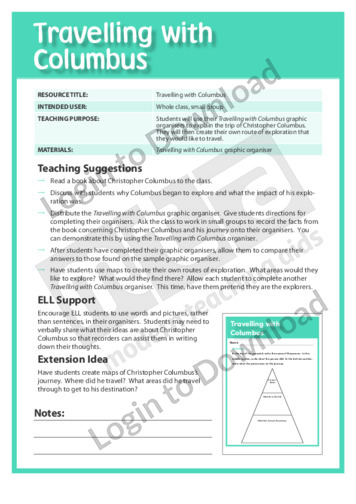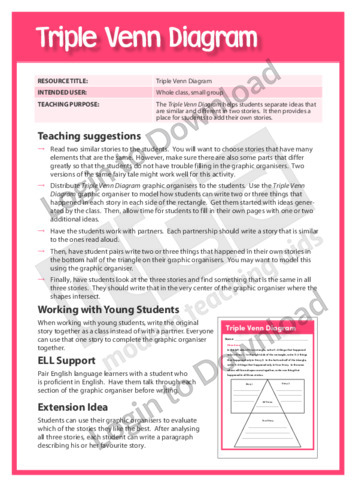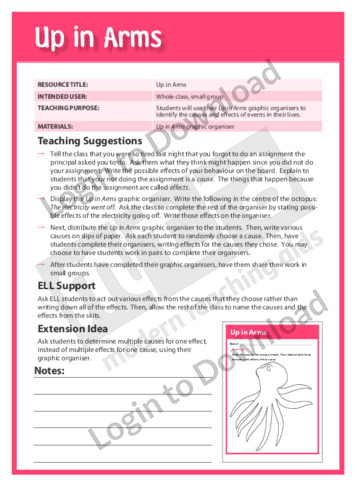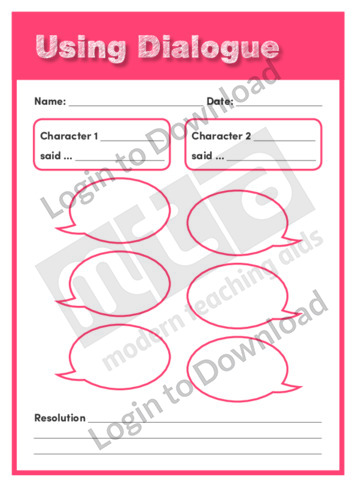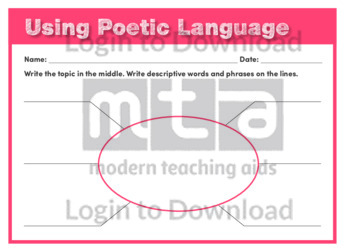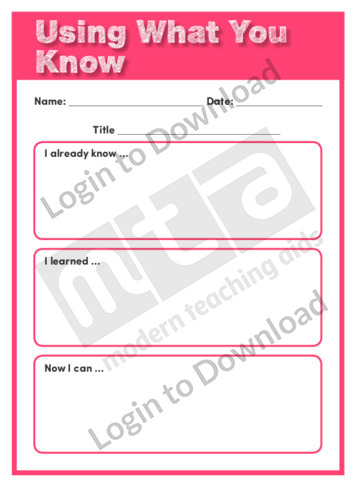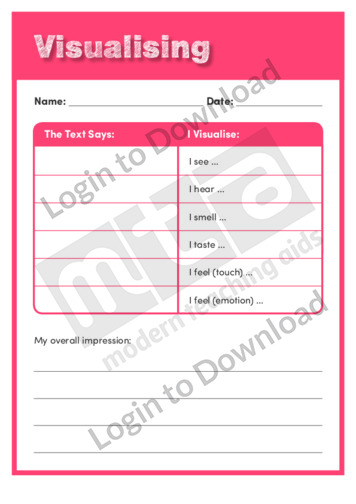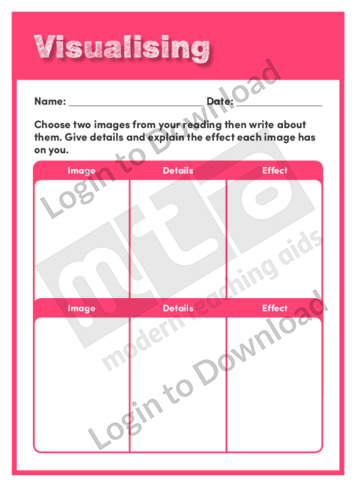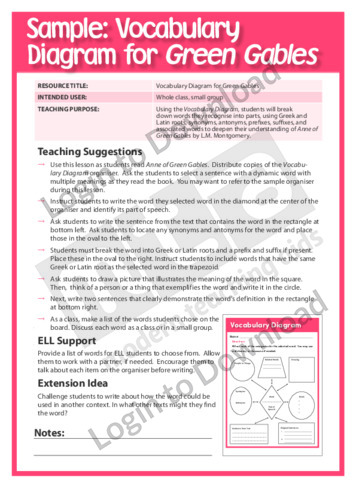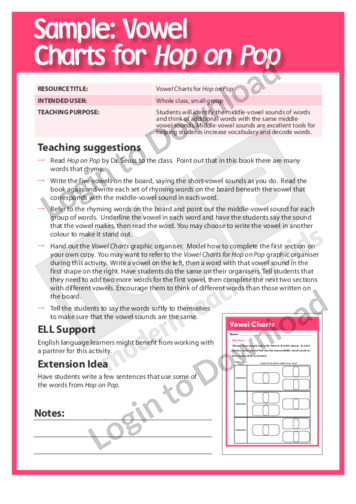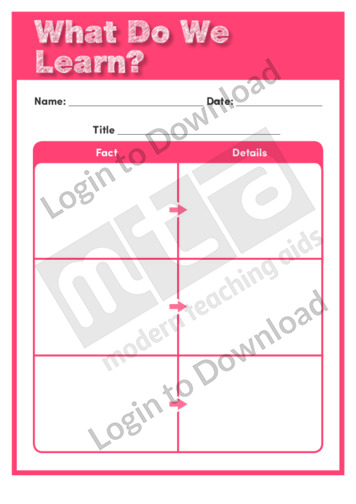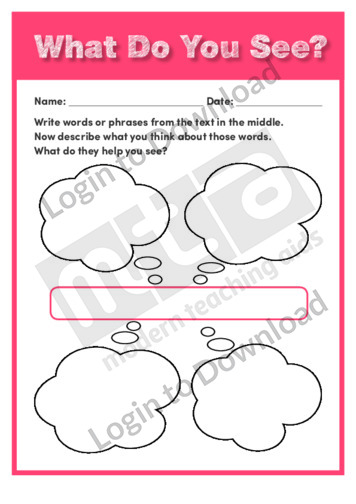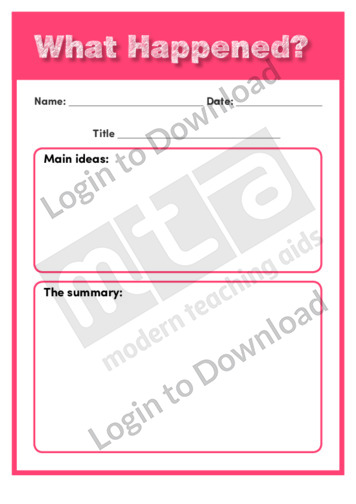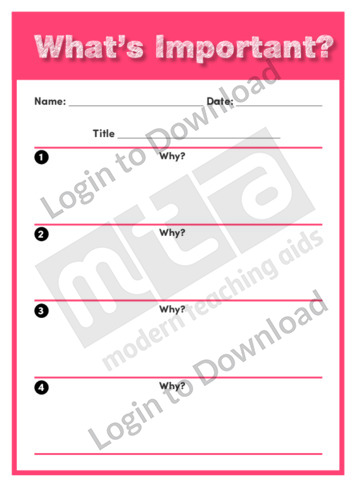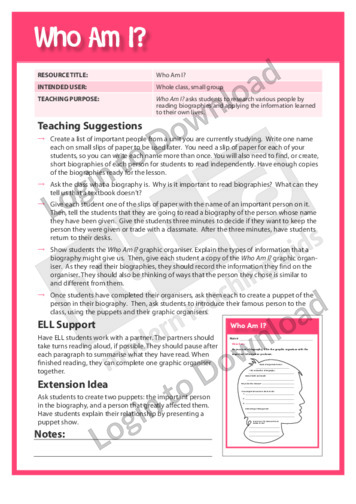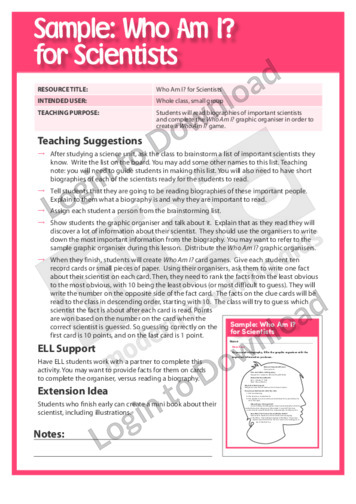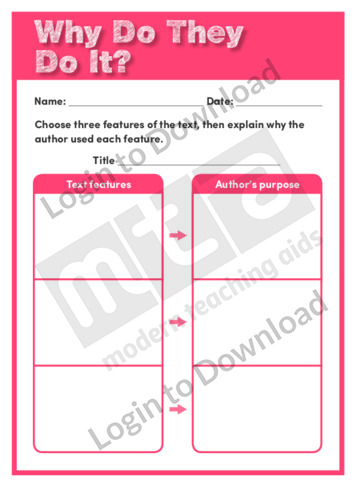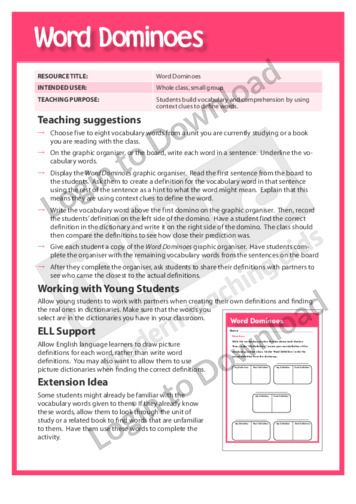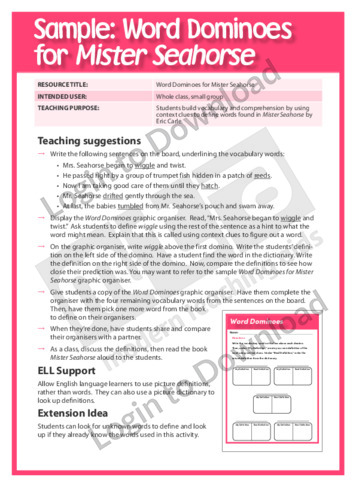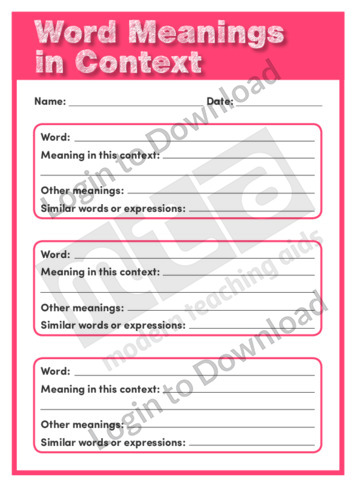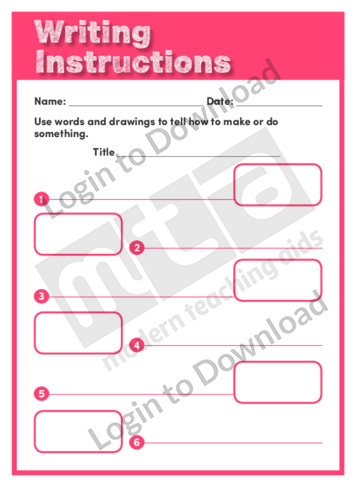This graphic organiser, ‘The Information Station’ supports students in developing their writing skills, focusing on sentence and paragraph structure.
This graphic organiser, ‘The Key to Fluency’ allows each student to organise their thoughts about a book, evaluate the book and then promote it to their classmates through a book talk.
This graphic organiser, ‘The Key to Fluency for Olivia’ asks students to evaluate the book Olivia by Ian Falconer, then use the information to give a book talk to try to convince others to read it.
This graphic organiser, ‘The Order of the Day’ asks students to place events and important facts in sequential order as they occur in a textbook.
This graphic organiser, ‘The Order of the Day for Volcanoes’ asks students to write the events from the non-fiction text, Danger! Volcanoes by Seymour Simon in sequential order.
This graphic organiser, ‘The Perfect Balance’ supports students in editing and revising their writing, focusing on balancing writing with facts and opinions.
This graphic organiser, ‘The Solution Scoop’ asks students to identify and evaluate the problems and solutions in a story.
This graphic organiser, ‘The Solution Scoop for The Pain and the Great One’ asks students to read The Pain and the Great One by Judy Blume, then identify problems and solutions found in the book and create other solutions for the two siblings.
This graphic organiser, ‘The True Story of the Three Little Pigs’ supports students to identify character, setting and plot structure in ‘The True Story of the Three Little Pigs’.
This Writing Traits activity, ‘Theme: Describing an Alien’ supports students in learning to organise ideas and consider word choice in their writing.
This graphic organiser, ‘Thoughts on Fluency’ gives students the opportunity to create original pictures based on literature to demonstrate their comprehension of the text.
This graphic organiser, ‘Thoughts on Fluency for A Closet Full of Shoes’ asks students to draw images after hearing a read aloud of the poem A Closet Full of Shoes, taken from the book A Light in the Attic by Shel Silverstein.
This graphic organiser, ‘Three Times a Charm’ encourages students to re-read passages to improve their comprehension of the material.
This graphic organiser, ‘Three Times a Charm for Canyons’ encourages students to re-read passages from Canyons by Gary Paulsen to improve their comprehension of the material.
This graphic organiser, ‘Ticktock’ provides students with the opportunity to read a short story and record the sequence of events in a logical way.
This graphic organiser, ‘Tracking Dialogue’ supports the teaching of reading and writing by giving students a template for recording the way dialogue works as they read or plan for writing.
This graphic organiser, ‘Tracking Dialogue’ supports the teaching of reading and writing by giving students a template for recording the way dialogue works as they read or plan for writing.
This graphic organiser, ‘Travelling with Columbus’ helps students explain the trip of Christopher Columbus, then create their own route of exploration that they would like to travel.
This graphic organiser, ‘Triangular Venn Diagram’ asks students to compare attributes and characteristics of various animals, analysing and recording their similarities and differences.
This graphic organiser, ‘Triple Venn Diagram’ helps students separate ideas that are similar and different in two stories. It then provides space for students to add their own stories.
This graphic organiser, ‘Triple Venn Diagram for Three Pigs’ asks students to compare and contrast three versions of The Three Little Pigs and identify the similarities and differences.
This graphic organiser, ‘Triple Venn Diagram’ consists of three overlapping circles and is a great resource to help students visualise the relationship between three concepts. It can be used to compare and contrast differences and similarities in characteristics between ideas (for example, characters, countries, stories or shapes etc.). It can be used to compare and …More
This graphic organiser, ‘Up in Arms’ provides students with the opportunity to record cause and effect events from their lives.
This graphic organiser, ‘Up in Arms About Cause and Effect’ provides students with the opportunity to record cause and effect events from a text.
This graphic organiser, ‘Using Dialogue’ supports the teaching of reading and writing by giving students a template for recording the way dialogue works as they read or plan for writing.
This graphic organiser, ‘Using Poetic Language’ supports the teaching of reading and writing by prompting students to record descriptive details as they read or write.
This graphic organiser, ‘Using What You Know’ supports the teaching of comprehension and reading strategies by asking students to record what they already know and what they learn as they read.
This graphic organiser, ‘Visualisation Wheel’ provides a structure with which students can recall and record the images and descriptions that come to mind as they read.
This graphic organiser, ‘Visualising’ supports the teaching of comprehension and reading strategies by asking students to use their senses to form mental images as they read.
This graphic organiser, ‘Visualising’ supports the teaching of comprehension and reading strategies by asking students to use examine images to determine their effect as they read.
This graphic organiser, ‘Visualising a Setting’ supports the teaching of reading and writing by asking students to use their senses to form mental images as they read and plan to write.
This graphic organiser, ‘Vocabulary Diagram for Anne of Green Gables’ enables students to break down words they recognise into parts, using Greek and Latin roots, synonyms, antonyms, prefixes, suffixes and associated words to deepen their understanding of Anne of Green Gables by L.M. Montgomery.
This graphic organiser, ‘Vowel Charts’ provides students with the opportunity for word play, using middle-vowel sounds and anchors, they can manipulate beginning and ending sounds to create new words.
This graphic organiser, ‘Vowel Charts for Hop on Pop’ helps students to identify the middle-vowel sounds of words and think of additional words with the same middle vowel sounds.
This graphic organiser, ‘What Do We Learn?’ supports the teaching of comprehension and reading strategies by asking students to identify facts and details as they read.
This graphic organiser, ‘What Do You See?’ supports the teaching of comprehension and reading strategies by asking students to form mental images as they read.
This graphic organiser, ‘What Happened?’ supports the teaching of comprehension and reading strategies by helping students to determine and summarise main ideas.
This graphic organiser, ‘What’s Important?’ supports the teaching of reading and writing by giving students a template for recording ideas and why they are important as they read or plan for writing.
This graphic organiser, ‘Who Am I?’ asks students to research various people by reading biographies and applying the information they find to their own lives.
This graphic organiser, ‘Who Am I? for Scientists’ asks students to read biographies of important scientists and create a Who Am I? game.
This graphic organiser, ‘Why Do They Do It?’ supports the teaching of comprehension and reading strategies by prompting students to identify authors’ purposes as they read.
This graphic organiser, ‘Why That Ending?’ provides a structure with which students can summarise the plot of the story, record the ending of the story and then create their own endings.
This graphic organiser, ‘Why That Ending? for Wild Things’ asks students to evaluate the plot and the ending of Where the Wild Things Are by Maurice Sendak and create new endings.
This graphic organiser, ‘Word Dominoes’ helps students to increase their vocabulary and comprehension by using context clues to define words.
This graphic organiser, ‘Word Dominoes for Mister Seahorse’ helps students to increase their vocabulary and comprehension by using context clues to define words found in Mister Seahorse by Eric Carle.
This graphic organiser, ‘Word Meanings In Context’ supports the teaching of vocabulary and comprehension by giving students a template for identifying multiple meanings of words.
This graphic organiser, ‘Writing Instructions’ supports the teaching of writing and science experiments by giving students a template for recording the steps in a procedure.
It�s that easy!

